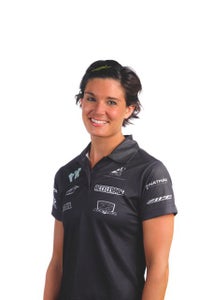New perk! Get after it with local recommendations just for you. Discover nearby events, routes out your door, and hidden gems when you sign up for the Local Running Drop.
In this Nutrition Q&A, professional triathlete and sports nutritionist Pip Taylor provides advice on using nutrition to help speed up the recovery process.
Q: Recently I’ve tried to step up the intensity of my training but I’m finding I am really sore for a couple of days after these harder sessions. Do you have any nutrition advice to help prevent me from becoming so sore after training (aside from getting enough carbohydrates and protein)?
Answer by: Pip Taylor

A: When you are training or racing hard—pushing the intensity and/or duration of workouts, or attempting new or unaccustomed exercise, or just one you haven’t attempted for some time—the chances are you will experience muscle soreness.
Delayed onset muscle soreness (DOMS) is likely the result of damage to both muscle structure and connective tissue. Some of this damage is a result of free radicals, which are produced during aerobic metabolism. During aerobic metabolic activity a series of reactions occur within the mitochondria of cells where fuel (glycogen and fats) are combusted in the presence of oxygen to release energy. Free radicals are highly reactive and are able to damage lipids, proteins and cellular DNA. Muscle damage and protein breakdown stimulates inflammation and triggers pain receptors.
Cells contain endogenous antioxidants, which act to neutralize free radicals and combat their destruction. Evidence seems to show that muscle cells respond to increased free radical production from exercise by strengthening their antioxidant capacity to reduce further damage to the tissue in subsequent bouts.
What you are experiencing is a training adaptation. Healthy cells, including muscle cells, actually require free radicals to stimulate adaptation. The next time you attempt the same exercise your muscles will be stronger and better able to cope with the demand and, in turn, you will suffer less soreness. Push yourself too far, though, and it’s likely that the antioxidant capacity of muscle cells will be overwhelmed—meaning acute damage more than just general soreness.
This is where dietary antioxidants are crucial because they act to support those produced endogenously and may be key in helping to reduce the severity of muscle soreness and damage. Rich sources of dietary antioxidants are foods such as fruits (especially cherries, berries, citrus, grapes), vegetables (think herbs, leafy greens and lots of color), nuts and seeds, and red wine (in moderation).
And if you think more is more or that you can take a shortcut, beware: High levels of dietary antioxidant supplementation can prevent optimal exercise-induced adaptation by stopping the free radicals’ signal to muscle cells to increase production of antioxidants, thus blunting the training adaptation response. So, if you truly want to see the results of your hard work translate to your training, rely less on supplementation and instead pay attention to your diet. Supplements may be warranted when there is a deficiency, but if you do take them, remember that more is not always better.
The excessive inflammation that causes muscle pain can also be dampened by omega-3 fatty acids—rich sources include fatty fish (salmon, trout, mackerel, sardines), olive oil, nuts, seeds and avocados. Other foods with anti-inflammatory effects include ginger, turmeric, garlic and green tea. Incidentally, some foods promote inflammation, including saturated fats, foods high in sugars and/or salt, highly processed foods, alcohol in excess and a high caloric intake.
If you stack your diet with real, fresh food, it is hard to go wrong.